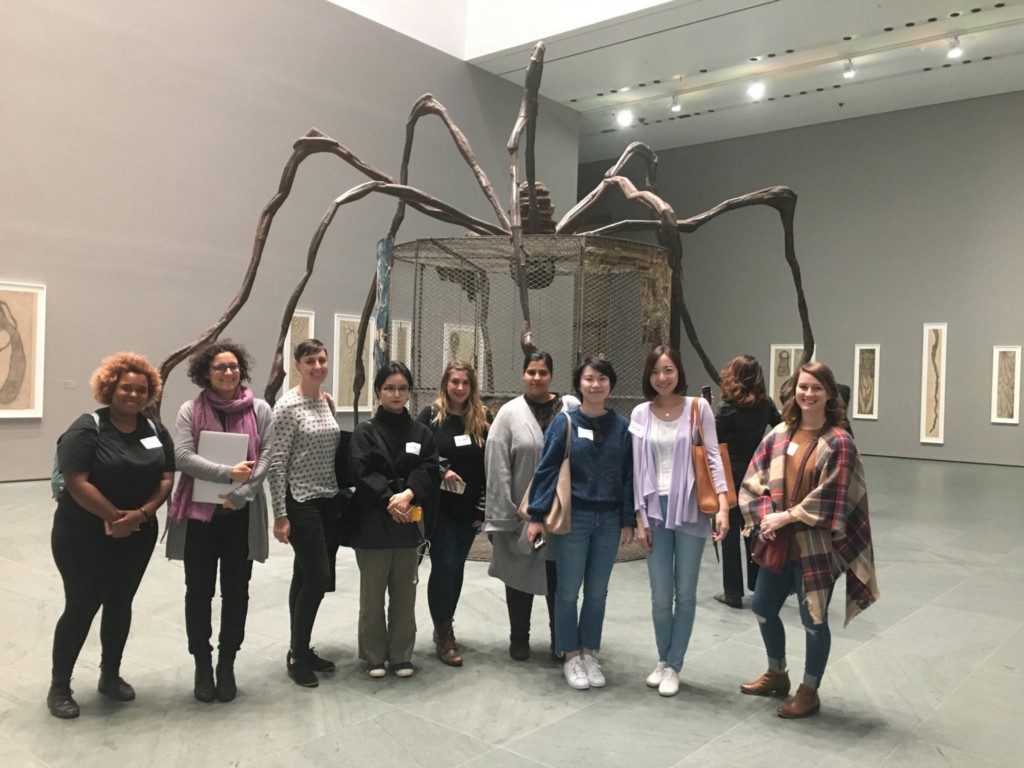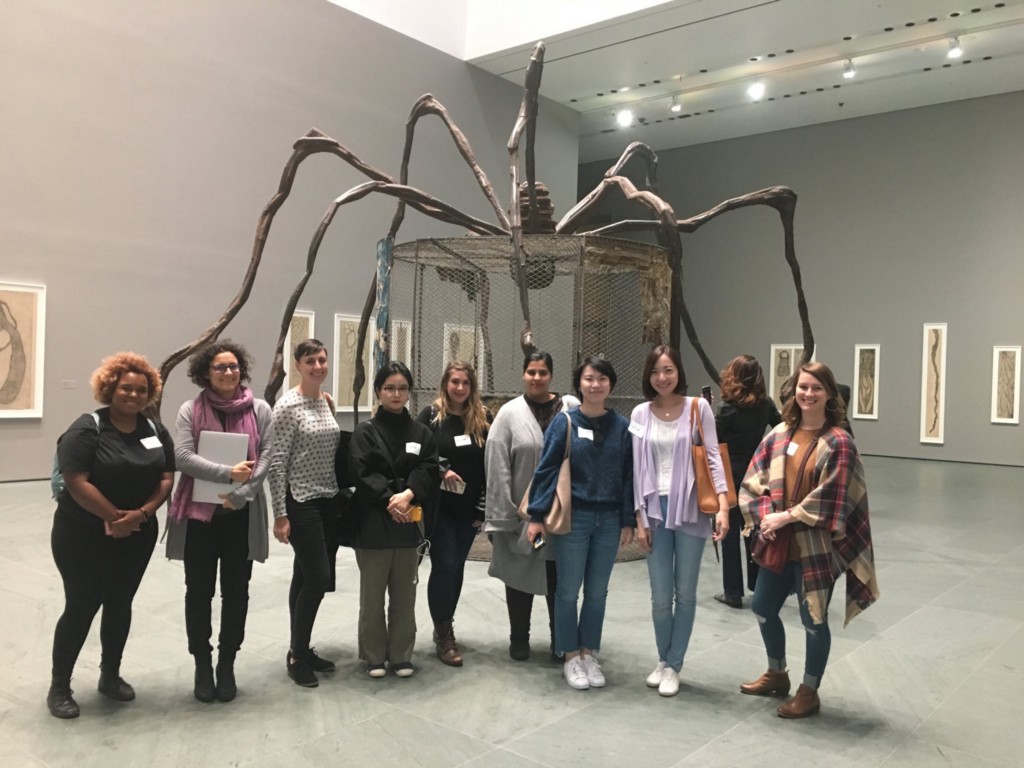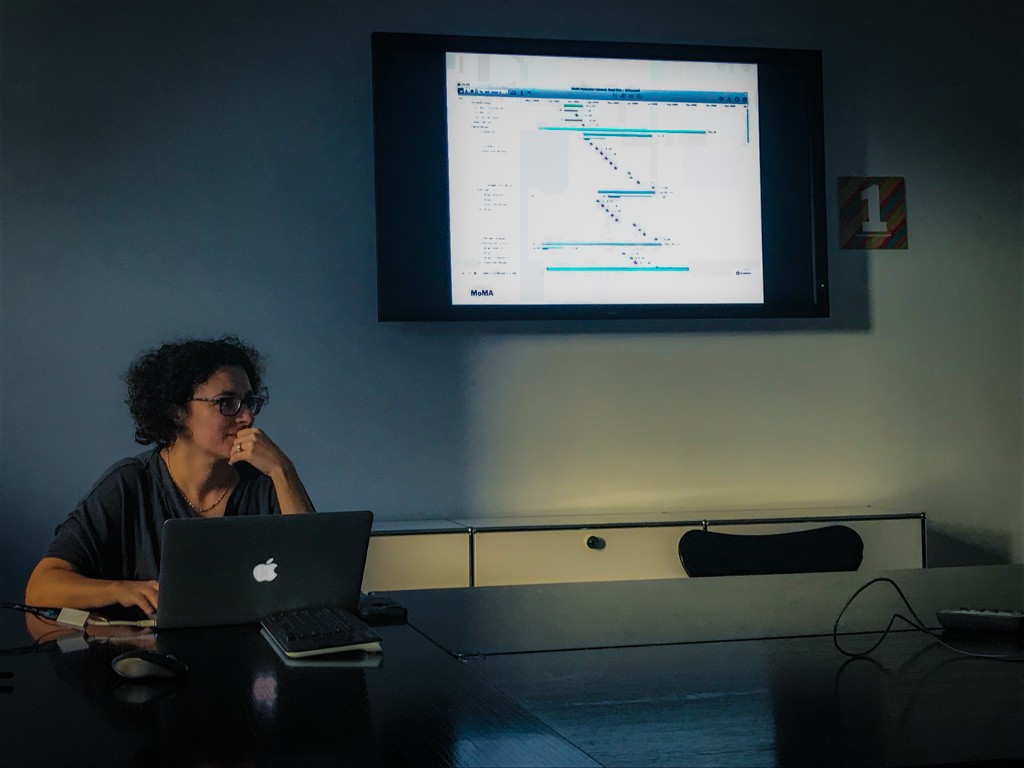
Pratt at MoMA: Implementing Digital Strategies in Museums
July 20, 2018 - All

In a new course at Pratt titled “Digital Strategy: Museum Planning and Management,” Elena Villaespesa teaches the frameworks and tools needed to implement digital strategies in museums. To build on readings and in-class exercises, the class spent an afternoon with MoMA’s Assistant Director of Digital Media, Chiara Bernasconi, discussing project management, content strategy, and the ways digital media has been incorporated at the museum.
Digital Ecosystem
MoMA’s public facing technologies include moma.org, social media platforms (Twitter, YouTube, Facebook, Instagram), mobile applications, and digital signage throughout the building. The museum also produces content for Coursera and Medium, and uses Campaign Monitor to manage email marketing campaigns. The latest digital project is the newly redesigned App, launched on iTunes in early October.

Digital Content Plan
As MoMA began to develop a comprehensive plan to manage their content across various platforms, they knew it was important to look at their audience data first.
Key takeaways included:
- 30% of their digital audience is between 18–34 years old, while the average museum visitor is much older.
- Increasingly more users are accessing museum content from mobile devices.
- 60% of their users are local when they access digital content, but this percentage could include international users who are visiting the area when they access content.
- Their collection is their core asset, both online and onsite.
- Most users access individual web pages via Google searches, rather than arriving at the homepage and using navigation links to explore the website.
Based on these insights, the digital team decided to establish several areas of focus:
- Developing content for young and international audiences. This includes creating a separate video strategy for producing video content and publishing it on YouTube (which has a comparatively young audience).
- Designing for the multi-device world — especially mobile.
- Being “the most comprehensive and authoritative source of information” for the museum’s collection by making the collection available in full online as well as using third-party platforms to “meet people where there are.”
Project Management
When Chiara first started at MoMA, she used Gantt charts to illustrate project schedules. The simple timelines included all the phases of a project, established a time frame for each of these phases, and defined which staff members would fulfill certain roles.
Over time Chiara was able to transition to incorporating principles of Agile Development for project management. This framework allows project teams to be more flexible and adaptable as they develop a product. Instead of restricting themselves with rigid technical requirements and waiting to address complications until after a final launch date, the digital media team iteratively releases a product, continuously improving on the previous version or phase.
Early in the process, project stakeholders identify the most essential product features, which helps them establish the Minimum Viable Product. Stakeholders also identify product features that can be achieved quickly. This process of prioritization allows the team to begin on early versions of the product, with the option to add supplementary features later.
An essential part of Agile Development is increased stakeholder participation. Chiara involves as many departments as possible in project meetings to cultivate institutional familiarity with the Agile process.

Website Redesign
One of the first Agile projects at MoMA was the redesign of moma.org. Rather than using the waterfall model for the project, which would have involved launching a “finalized” version of the new site at the end of the project timeline, MoMA decided to deploy changes incrementally over two years. Since many of the staff members at MoMA were new to Agile, the museum worked with an external team, Pivotal Labs, to get some initial training.
Two priorities were established early on. First, knowing that 40% of visitors access website content from their phones, the team chose to implement responsive design principles with a focus on mobile devices.
Second, the team prioritized weeding out content on some of the busier pages to create a cleaner, simpler design. This required managing the expectations of stakeholders across several departments, especially those who felt strongly about continuing to add content.
The team also realized that old content using outdated technologies could still be valuable. One of the most accessed sections of moma.org is “What Is a Print?”, an educational resource that uses the Adobe Flash plug-in. For now, this section of the site remains in its original form, but an updated version remains a possibility for the future.
As part of this ongoing process, the digital media team holds retrospective meetings once a month to discuss what is working and what issues need to be addressed.
Digital Strategy
During her presentation, Chiara explained that the museum world isn’t ready to eliminate specialized digital departments, even though aspects of digital media have become embedded in every department. She believes that developing a separate digital strategy can help in creating an institutional “digital mindset”, by providing “an overall framework for prioritising and planning projects in a more strategic and holistic way to meet wider organizational objectives.”
Pratt at MoMA: Implementing Digital Strategies in Museums was originally published in Museums and Digital Culture – Pratt Institute on Medium, where people are continuing the conversation by highlighting and responding to this story.